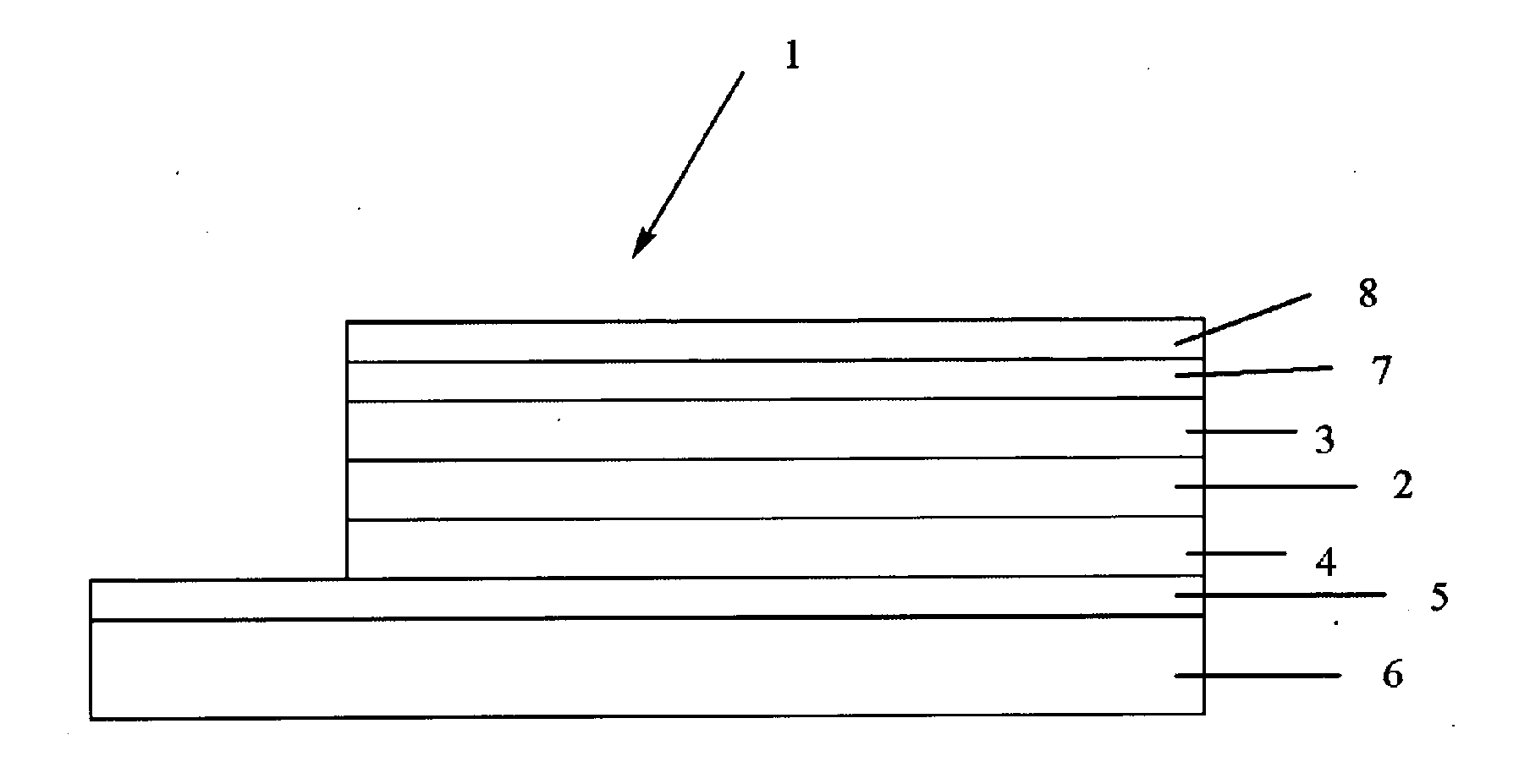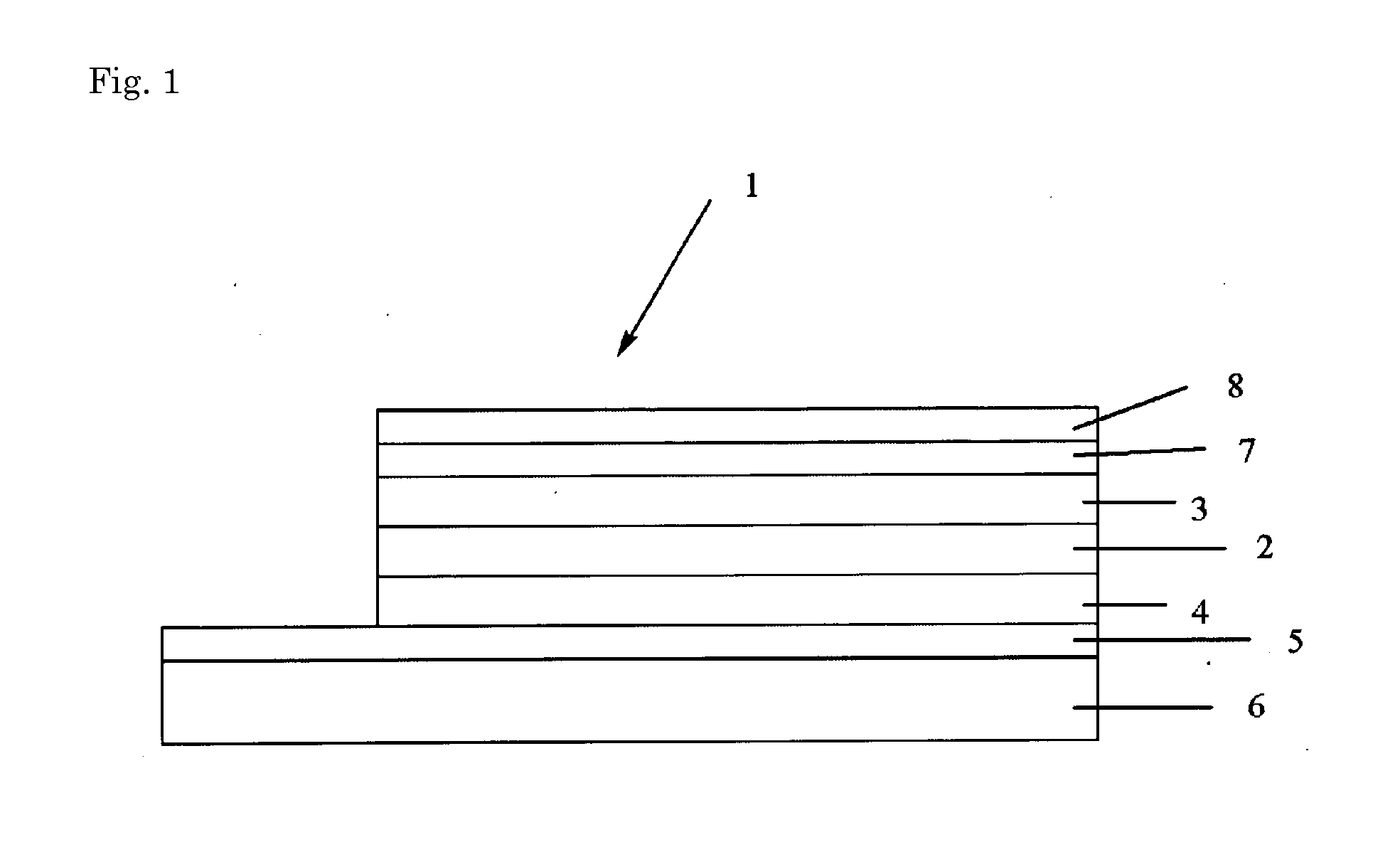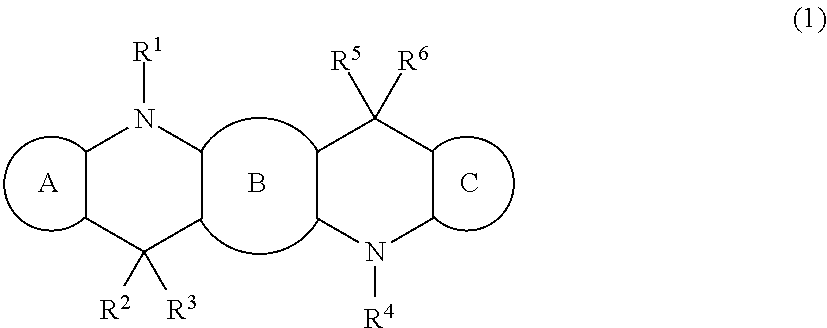Photoelectric conversion element
a conversion element and photoelectric technology, applied in the field of photoelectric conversion elements, can solve the problem that the photoelectric conversion efficiency is not necessarily achieved, and achieve the effect of high photoelectric conversion efficiency
- Summary
- Abstract
- Description
- Claims
- Application Information
AI Technical Summary
Benefits of technology
Problems solved by technology
Method used
Image
Examples
example 1
[0273]On a transparent conductive glass substrate 6 on which a F (fluorine)-doped SnO2 thin film (first electrode 5) is formed, a dense layer 4 was formed by coating titania sol PASOL HPW-10R manufactured by Catalysts&Chemicals Industries Co., Ltd. using a spin coating method and firing at 450° C. for 30 minutes. After firing, a titania paste (Solaronix Titananoxide D) manufactured by Solaronix was further coated by a spin coating method and then fired at 450° C. for 30 minutes to form a porous semiconductor material. Next, the porous semiconductor material described above was immersed in a solution prepared by mixing a mixed solvent of acetonitrile and tertiary butyl alcohol in a ratio of 1:1 (volume ratio) with a ruthenium dye (product name: Ruthenium 520-DN, HOMO level: −5.25 to −5.45 eV) manufactured by Solaronox. Whereby, a photoelectrode 2 made of a sensitizing dye-adsorbed mesoporous titanium dioxide having a film thickness of about 2 μm to 4 μm was formed. Then, 2% by weight...
PUM
| Property | Measurement | Unit |
|---|---|---|
| number average molecular weight | aaaaa | aaaaa |
| hole mobility | aaaaa | aaaaa |
| electrically conductive | aaaaa | aaaaa |
Abstract
Description
Claims
Application Information
 Login to View More
Login to View More - R&D
- Intellectual Property
- Life Sciences
- Materials
- Tech Scout
- Unparalleled Data Quality
- Higher Quality Content
- 60% Fewer Hallucinations
Browse by: Latest US Patents, China's latest patents, Technical Efficacy Thesaurus, Application Domain, Technology Topic, Popular Technical Reports.
© 2025 PatSnap. All rights reserved.Legal|Privacy policy|Modern Slavery Act Transparency Statement|Sitemap|About US| Contact US: help@patsnap.com



